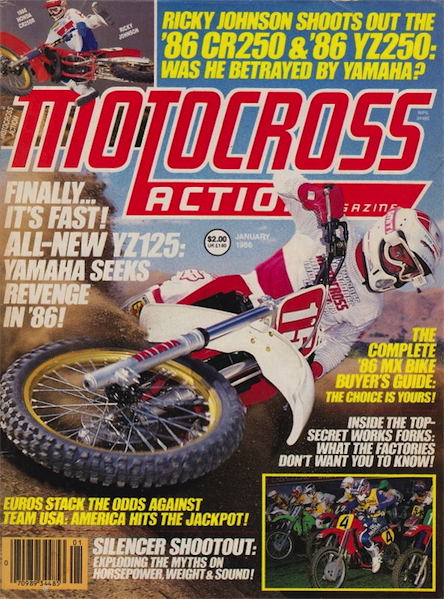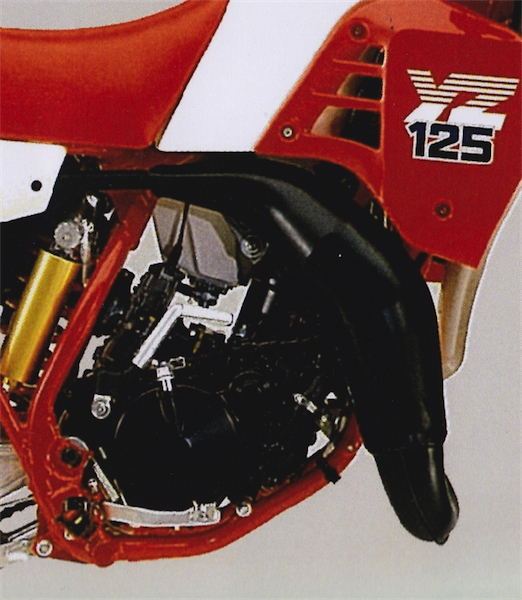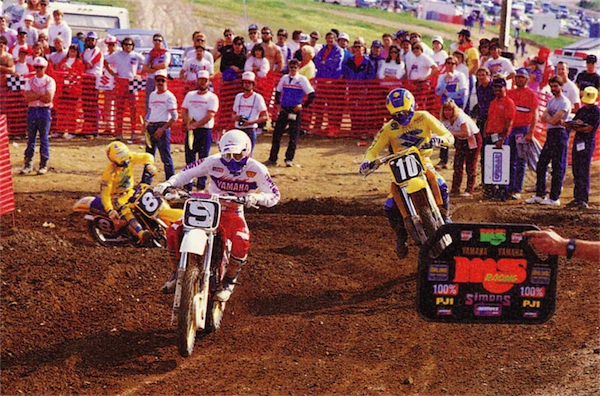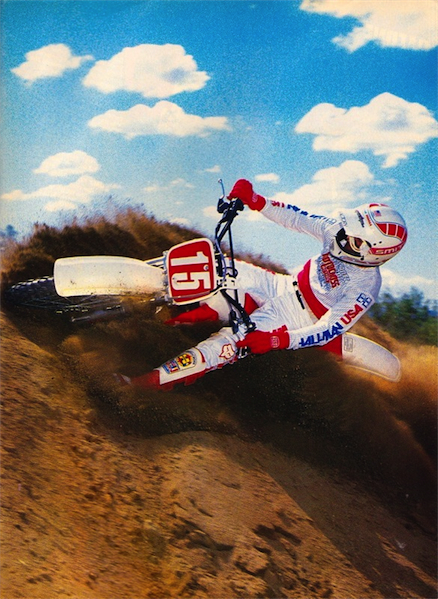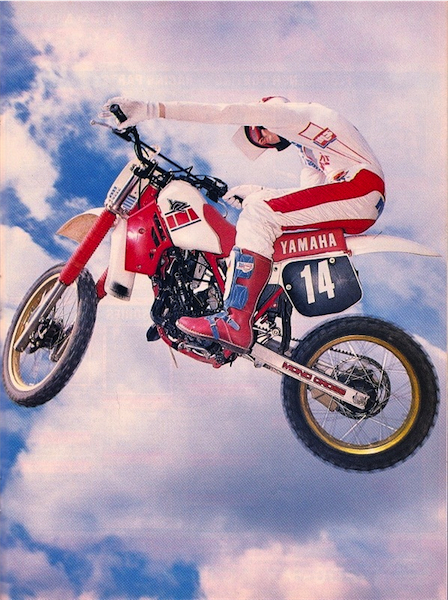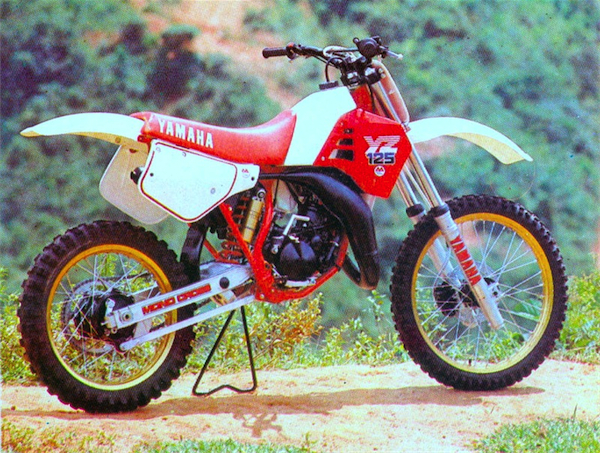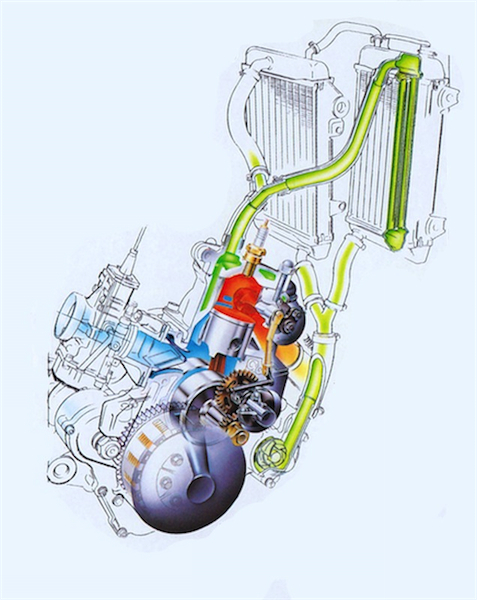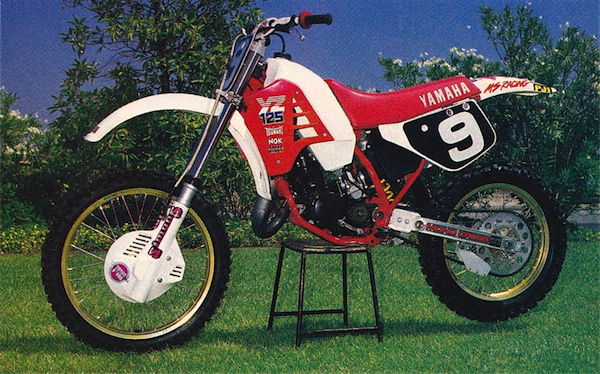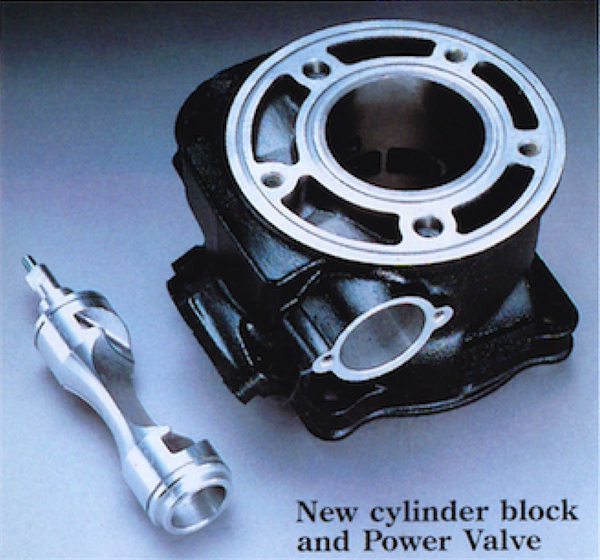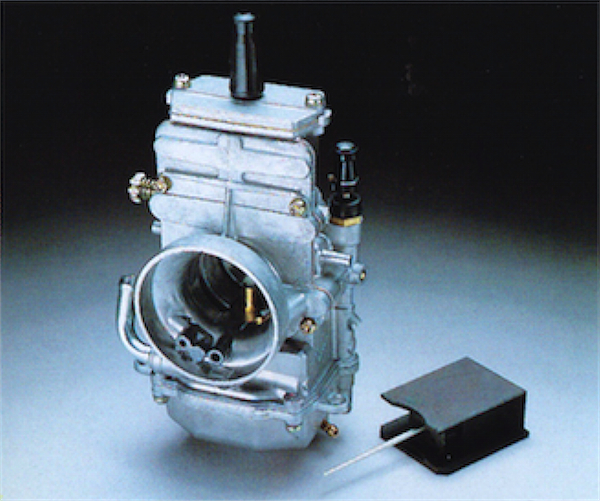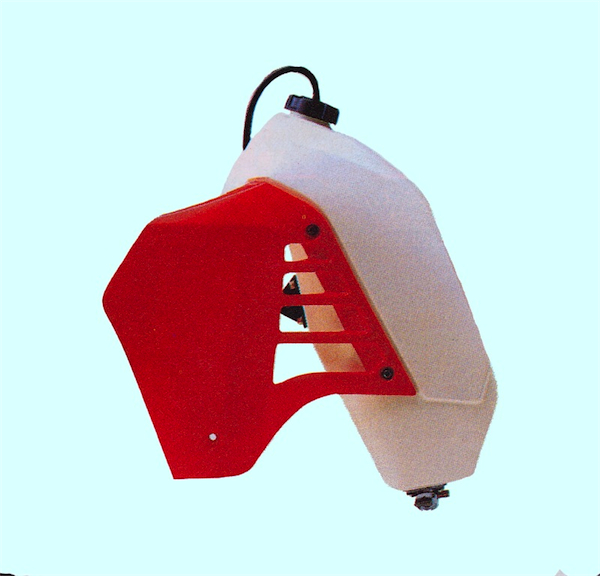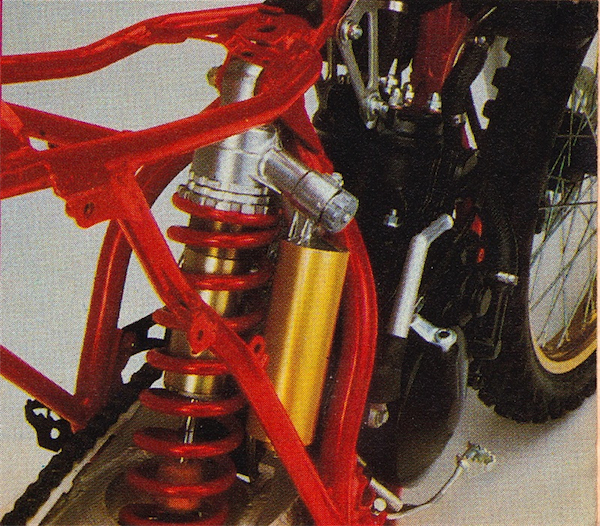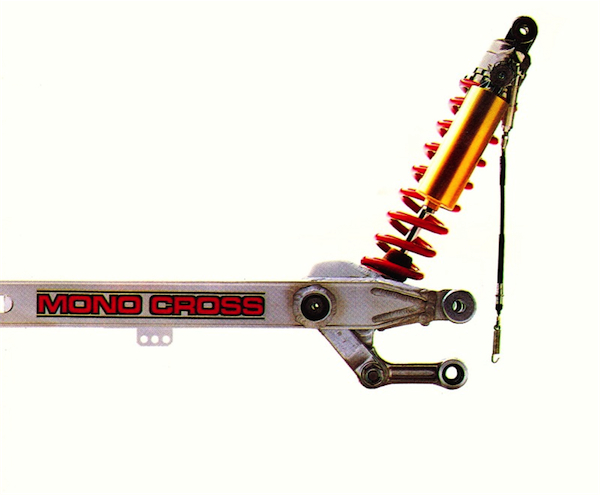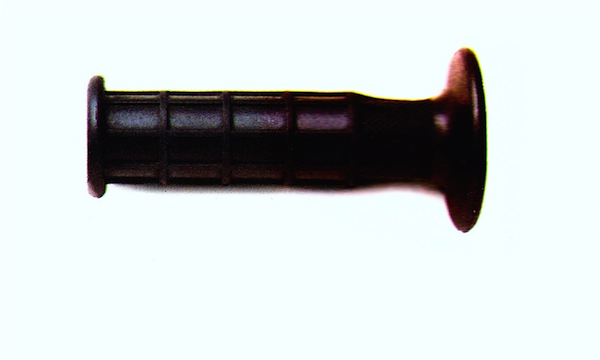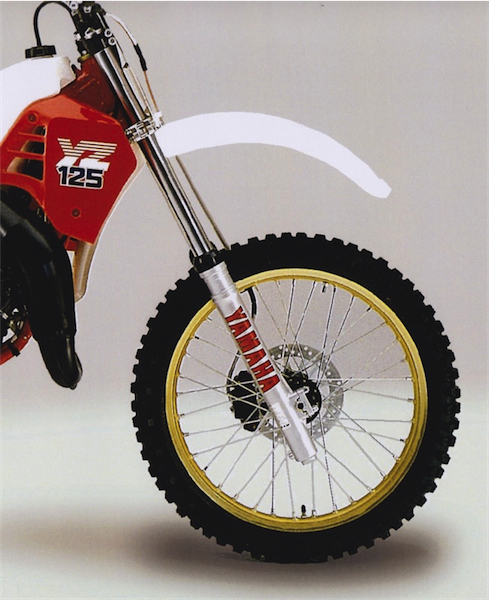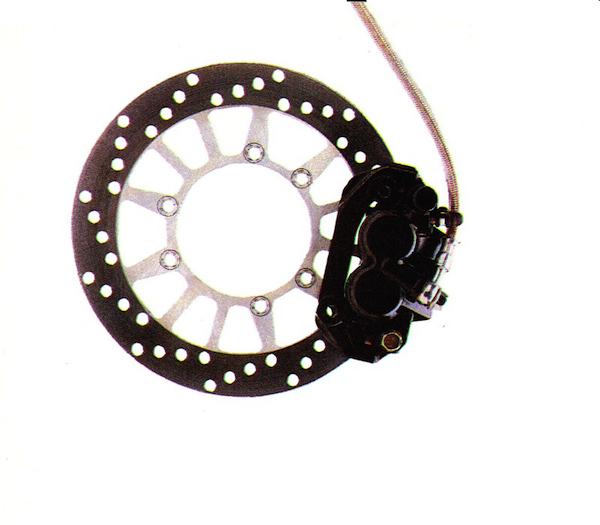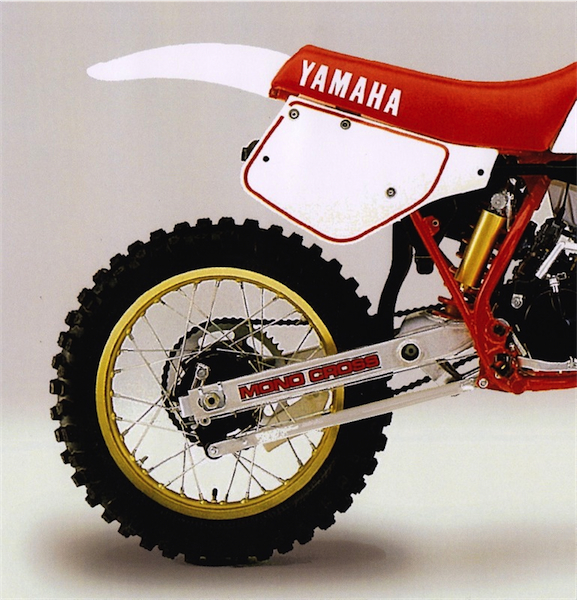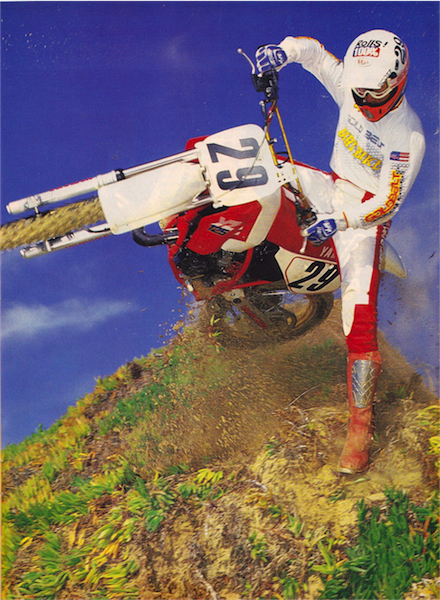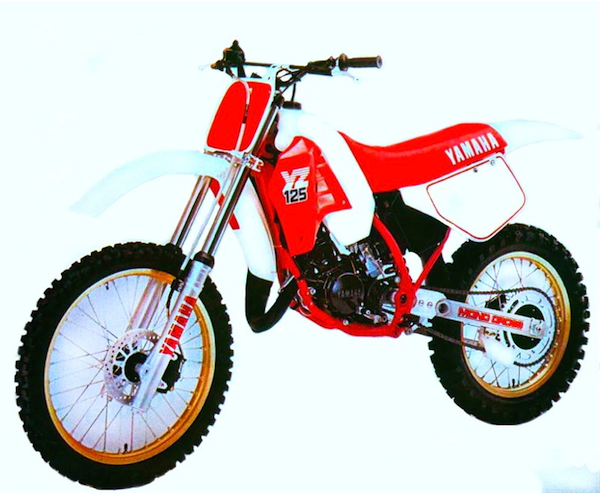For this week’s GP’s Classic Steel we are going to take a look back at the 1986 Yamaha YZ125.
For this week’s GP’s Classic Steel we are going to take a look back at the 1986 Yamaha YZ125.
 |
|
Comeback Kid: After years of being bullied by its 125 classmates, the lowly YZ125 came roaring back with a vengeance in ’86. All-new from the ground up, the YZ125-S offered competitive power, an excellent chassis and solid performance.
|
Today, the 125 class is all but a distant memory to most motocross racers. The little buzz bombs have mostly become the playthings of nostalgic Vet riders looking to relive the past. Fun to ride and inexpensive to own, the lowly 125 two-stroke is just not competitive in today’s world of 43 horsepower 250F’s. Once the most popular bikes in American motocross, the tiddler has become a leftover from a bygone era.
 |
|
The headline says it all – “Finally… It’s fast!” After years of dog-slow 125’s, the YZ was back in the hunt in ’86.
|
In the early seventies, however, things were very different. At that time, prospective 125 riders had a huge selection of contenders vying for their hard earned greenbacks. Bikes from DKW, Sachs, Monark, CZ, Penton, Butlaco, Zundapp and Suzuki all threw their hat into the ring of 125 competition. While early 125 competitors had a variety of bikes to choose from, none of them were particularity good. The European offerings were expensive, finicky and fragile; while the Japanese machines were cheap, but uncompetitive. All that changed, however, in the fall of 1973 with the introduction of the all-new Honda CR125M Elsinore.
 |
|
Punchy: For 1986, Yamaha unveiled an all-new 123cc power plant for their eighth-liter racer. The new motor was as advanced as anything available at the time and featured a case-reed design pilfered from Eddie Lawson’s YZR500 GP works road racer.
|
The little Honda fueled a 125 explosion in America and turned the tiddler class into the hottest division in motocross. Riders like Marty Smith, Bob Hannah and Broc Glover became motocross superstars wringing out the little one-two-fives before huge crowds of adoring fans. While in Europe, the 125 was an afterthought, in the good old USA, the eighth-liter was king.
 |
|
In 1986, Factory Yamaha rider Keith Bowen (#9 pictured, leading A.J. Whiting #10 and Erik Kehoe #8) would take the much improved YZ125 to several top finishes in the Motocross Nationals. “Bones” would card wins at Southwick and Lakewood, before finishing the series in fourth overall.
|
During this 1970’s motocross explosion, the Japanese used the 125 class as a beachhead to the larger divisions. CR’s, RM’s and YZ’s flooded America’s starting lines, and by the latter part of the decade, had all but wiped out the Euro 125 competition. While the Euro’s still held sway in the big-bore divisions, in the 125 class it was a fait accompli.
 |
|
Going in deep: While the newfound power was by far the biggest news regarding the ’86 YZ, its new chassis was actually its biggest virtue. Sharp in the turns and rock steady at speed, the YZ125 offered the most balanced handling package of 1986.
|
While the 125 class was firmly in the grasp of the Japanese, it was still a tight battle every year amongst the Nipponese competitors. After Honda’s Elsinore bombshell, Yamaha and Suzuki had been quick to counter with ultra-competitive 125’s of their own. The new RM and YZ 125’s quickly outclassed the Honda and left the red machine sucking their yellow vapor trail. In 1981, Suzuki dealt a death blow to the class with its incredible liquid-cooled, Full Floater RM125-X. The RM was far and away the class of the field and dominated 125 racing in ’81 and 82. Then in ’83, Honda came roaring back with their all-new works replica CR125R. It was light, fast, carved like a Ginsu and looked like a million bucks. In 84, Kawasaki would finally get with the program and capture their first ever 125 class victory with their rocket-fast KX125. The KX lacked handling finesse and was marginally suspended, but it barked like a 250 and left the other 125’s eating roost in ‘84 and ’85. So what about the Yamaha? Well, that is a sad, sad story indeed…
 |
|
Yamah-dog: The early-eighties were a tough time to be an YZ125 fan. Funky handling, crummy suspension and anemic motors made the Y-Zed the poster child for editorial abuse by the enthusiast press. Matthes talked to his brother and dad who had a BAD experience with the 1985 YZ 125 HERE
|
 |
|
Power profile: On the dyno, the 1986 YZ125 pumped out the most peak horsepower of any 125. On the track, however, its short spread and notchy gearbox gave way to the superior torque and flawless delivery of the ‘86 CR125R.
|
In 1974, Yamaha had introduced their first YZ125. The original Y-Zed was expensive, exotic and rocket-fast. The next year in 1975, the YZ inherited the ultra-trick monoshock from Hakan Andersson’s ’73 World Championship winning YZ250 and began the seventies suspension arms race. Once again, the YZ was trick, fast and expensive, but harder to ride than the everyman RM125. The rest of the seventies would be dominated by the bikes from Hamamatsu, with the YZ playing second fiddle to the excellent RM’s.
 |
|
In addition to all its performance improvements, one big added bonus on the new YZ was the repositioning of the decals from the tank proper to the radiator shrouds. This meant the stock decals would last past the first ride and prevented the unfortunate decal butchery common previously, as frustrated riders tried to cram the stock Yamaha’s decals on the old bike’s puny shrouds.
|
As the eighties began, Yamaha would add liquid cooling and a linkage to their monoshock suspension, but top-heavy handling and sub-par rear suspension would keep it out of the winners circle. Then in 1984, Yamaha introduced a machine that would go down as one of the most infamous turds in motocross history – the YZ125-L. The last of the yellow Zed’s looked good and handled well, but offered a motor incapable of outrunning a KX60. The new YZ was gutless down low, anemic on top and an unmitigated disaster. The little YZ became the laughing stock of the class and the butt of motocross jokes from coast to coast.
 |
|
In addition to being more powerful, the new motor was lighter, and more compact than the outgoing mill. This combined with the lower mounted radiators and refreshed ergonomics, helped contribute to the new bike’s light and airy feel.
|
After the debacle of ’84, Yamaha’s racing team manager Kenny Clark famously stated, “We will not have a slow 125 for the ’85 season!” This bold claim would go down in infamy, however, as Yamaha would once again unveil a dog of a 125 for ’85. The 1985 “Yama-dog” YZ125-N looked fresh and new with is spiffy new coat red and white paint, but offered the same abysmal performance. Once again, the YZ125 was the whipping boy of the 125 class. After the black eyes of ’84 and ’85, Yamaha knew they would need to pull out all the stops to bring the YZ back to respectability in the125 class. For ’86, no warmed over and tarted up retread was going to do.
 |
|
Business as usual: While the introduction of the production rule was a big deal for most of the Factory teams in ’86, it was nothing new to Team Yamaha. Stuck running production bikes since 1984, the Yamaha bikes were still the least trick in the pits.
|
Basically a stock YZ with a Simmons “Anti-Cavitation” fork kit installed, Bowen’s YZ125 was not in the same league as Micky Dymond’s Factory Honda in 1986.
For 1986, Yamaha threw out just about everything from the unloved ’85 YZ. A new case-reed motor hoped to erase memories of the previous machine’s mini-bike humiliations and was bolted to an all new chassis. The suspension featured a slick anti-stiction coating and an all-new “bottom-link” Monocross design for the rear. Ergonomics were greatly improved, with a new works-style drop tank that was narrower and carried the fuel lower down on the chassis. New brakes, grips, bars and a pretty set of gold anodized rims further rounded out the ’86 YZ package.
 |
|
Attention, 1976 is calling: In spite of pouring a great deal of technology and development into the all-new YZ, Yamaha went old school with the use of seventies era steel silencer. Even in 1986, this was a cheesy bit of kit.
|
 |
|
Although the ’86 YZ’s mill was all-new, it kept the same basic power valve system from the previous Y-Zed. Originally debuted on the ’82 YZ250, the YPVS (Yamaha Power Valve System) used a rotating drum to alter exhaust port timing based on engine rpm. This basic power-valve system would be found on Yamaha YZ’s well into the next decade.
|
 |
|
New and improved: In 1986, the big news on the carburetor front was the “flat slide.” Both Mikuni and Keihin offered their own versions of this hot new technology, and by the later part of the decade, the old round slide was a distant memory. Even with Mikuni’s 34mm secret weapon installed, the ’86 YZ suffered a nasty bog on hard G-outs.
|
When designing the ’86 YZ125, Yamaha knew they had a lot of work to do in the motor department. They had not been at the top of the 125 motor standings since 1979 and had the most ground to make up. For their new 125 power plant, Yamaha looked to the technology pioneered in their road race department. Much as they would do a decade later with their YZ400F, the Yamaha engineers looked at Eddie Lawson’s works 500cc road racer and basically loped off one cylinder. The resulting 123cc, 56 x 50mm case-reed mill was as state-of-the art as anything in the class at the time. It still featured Yamaha’s patented YPVS (Yamaha Power valve System) to alter exhaust port timing and mated it to all-new 34mm Mikuni TM34SS flat-slide mixer. Handling the power was all-new clutch and close-ratio six-speed transmission
 |
|
Originally pioneered on the 1982 works Hondas, the “drop” tank was trick stuff in 1986. The advantage of this design was that it not only allowed the rider compartment to be narrower, it also lowered the bike’s center of gravity by caring the fuel as low as practically possible on the chassis.
|
So was the ’86 YZ125 power plant improved? Oh yes. Hallelujah yes! For the first time in half a decade, the YZ125 was no longer the doormat of the 125 class. The new Yammer barked off the bottom like no YZ 125 before and pulled with authority into a solid mid-range hit. After the midrange blast, it was time to slip in a new cassette, but Y-Zed was fast and competitive. On the dyno, its 26.4 horsepower was tops of any 125 in ’86, but on the track, it was not quite as omnipotent. Down low and through the middle, it lost to the mongo-motored Honda CR125R. On top, it fell behind the “Works Replica” KX125 and its high-rpm shriek. There were also issues with its new carburetor, which tended to have a nasty bog on hard landings and with its clutch and transmission, which were stubborn and notchy. Still, it was by far the best liquid-cooled YZ125 mill ever produced and a quantum leap ahead of its predecessors.
 |
|
Swedish lite: Through a partnership with Ohlins, Yamaha offered replicas of the premium Swedish built shocks (manufactured by Yamaha) on the ’86 YZ’s.
|
 |
|
In addition to the “Ohlins-style” shock, the new YZ received a beefed up swingarm and new “bottom-link” Monocross rear suspension system.
|
While the motor was certainly the biggest news of ’86, the YZ’s new chassis was probably its greatest asset. In ’86, the 125 class fell into one of three categories: the carvers (Honda), the clankers (Kawasaki) and jack-of-all-trades (Yamaha and Suzuki). Last in the handling category was the Kawasaki, which required brute force and strength of will to tame its cantankerous manners. It was a handful on the straights and an unwilling participant in the turns. In third was the Suzuki, which was passible in the turns and decent at speed, but not particularly impressive in any one area. In second, you had the Honda, which was the King of the inside line, but feared fast straights like a mailman at a Doberman Pinscher convention. Topping off the handling sweepstakes was Yamaha, which turned nearly as well as the CR, but had no peers at speed. Its new slim layout made moving around easy and gave the bike a light and airy feel on the track.
 |
|
Meat grinder: In 1986, the only bike with a decent set of OEM grips was Honda. While Yamaha proclaimed these new grips to be more comfortable, one ride was enough to convince all but the most hardened of hand that they had to go.
|
On the suspension front, the new YZ was a case of good and bad in ’86. Upfront, the Yamaha used a set of 43mm leading-axle Kayaba forks that featured eight-position compression damping (but no rebound) adjustment and punched out 12.0 inches of travel. In 1986, the cartridge fork revolution had not yet made its way to the 125 class, so the YZ’s damper rod KYB’s were not on the surface, a huge disadvantage. None of the forks in the’86 125 class could be considered spectacular and all of them were leaps and bounds behind the works-type silverware found on the ’86 CR250R. In spite of this apparent hardware parity, however, Yamaha once again found a way to turn out a terrible set of forks. In stock condition, the Yamaha’s KYB’s were undersprung for anyone over 125 pounds and harsh in action. In ’86, they were the worst of a mediocre field.
 |
|
The 43mm KYB’s found on the ’86 YZ offered 12.0 inches of travel and eight available compression damping settings (but no rebound). In spite of their touted “alumite anti-stiction” coating and a big red YAMAHA sticker on the tubes, they offered woeful performance and a punishing ride.
|
Things were better out back for the YZ faithful, however. For ’86, Yamaha spec’d out an all-new rear suspension design for their full-size YZ’s. The new “bottom link” rear provided a new leverage ratio and a lower center of gravity than previous design. The new “Ohlins” style shock retained the ‘85’s innovative, but largely ineffectual BASS (Brake Actuated Suspension System) system offered 28 compression and 25 rebound setting s to fine tune the ride. Travel measured a full 12.4 inches.
 |
|
In today’s age of 260mm front stoppers, the 170mm front disc on the ’86 YZ looks like something more appropriate to a mini bike.
|
Out on the track, the new-look Mono offered the best ride of any of the ’86 125’s. It was plush over chop and soaked up big hits well. Just as in ’85, many riders disconnected the BASS system all together (The BASS was designed to lessen compression damping under braking, but could cause the shock to blow through the stroke it the brake was used in the whoops or hit accidentally when landing or hitting bumps) and were happy with its performance none-the-less. As a bonus, there was none of the nasty “Yama-hop” kicking that made the ’85 YZ such a handful in the rough. This was one well sorted rear end.
 |
|
While the forks on the ’86 YZ125 left a lot to be desired, its excellent Ohlins-style shock was the model of control and performance. In 1986, this was the best rear end in the 125 class.
|
 |
|
With its barky power, light weight and slim ergos, the 1986 YZ125 was the most fun Y-Zed in over half a decade.
|
In the details department, the YZ was a step behind the best in the class in ’86. Braking was decent (the ’86 YZ actually used a smaller disc than the ‘85) and better than the anemic Suzuki, but behind the Honda and Kawasaki. The new YZ layout offered much improved ergonomics and tied with Honda for the most comfortable bike. The YZ’s grips were still hard as a rock and chewed up hands at an alarming rate. Most riders did not care for the YZ’s stock bars, as they were too high, oddly shaped (adding to the infamous Yamaha thumb) and easily bent. Both the clutch (chattery, grabby and easily overheated) and gearbox (notchy and impossible to shift under a load) were by far the worst in the class and a major handicap in the toe-tapping 125 class. Overall quality was good and the bike was far more reliable than the grenade prone RM and KX, but not quite up to the bulletproof CR.
 |
|
The 1986 YZ125 was no world beater off the showroom floor, but it was an important bike for Yamaha. After years of abject failure, the little YZ was back in the running and actually a legitimate contender for the 125 class crown. While it would take Yamaha another decade to dominate the tiddler division, the ’86 YZ125 was an important step in bringing the tuning fork brand back to prominence.
|
In 1986, $2099 bought you a lot of motorcycle. The all-new ’86 YZ125 was hard-hitting, great handling, sharp looking, and at least half well-suspended. Perhaps most importantly, it was no longer the whipping boy of the 125 class. It was not the fastest (Honda) or the best suspended overall (Suzuki), but it handled amazing well and finally had the power to run at the front. If not for its crummy fork and notchy gearbox, it may have been the best 125 of ’86. Still, at least it was not the worst bike of ’86, and for Yamaha at the time, that was a major accomplishment.
For your daily dose of old-school moto goodness, make sure to follow me on Twitter-@TonyBlazier

